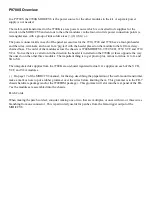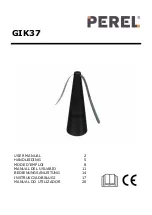
Safety
5
2
Safety
The NTP are intended for installation in machines.
General applications are: loosening, conveying, compacting, separating
bulk materials and reducing friction. NTP are used for emptying bunkers
and as drives for sieves and vibration tables.
The NTP may also be operated in dusty and wet environment, but not in
water or in other liquids.
The NTP B+C may only be operated clocked.
Any other use is considered improper.
Installation, commissioning, maintenance and troubleshooting of the NTP
may only be performed by authorised qualified personnel.
All handling of the NTP is the responsibility of the operator.
IMPORTANT
Netter
Vibration
assumes no liability for personal injuries and material
damages if technical changes to the product were made or the notices and
regulations in these instructions were not observed.
WARNING
Falling parts
The NTP, construction parts as well as fastening screws can
come loose due to vibration. Falling parts lead to severe
personal injuries.
➢
Check the fastening screws after one hour of operation
and thereafter at regular intervals (generally monthly).
➢
Retighten the fastening screws, if necessary.
➢
A safety device with a safety cable is mandatory for criti-
cal mounting situations.
WARNING
Compressed air
A loosened hose which is under pressure can lead to personal injuries.
➢
Screw the hose lines on carefully.
➢
Check the hose lines and connections after one hour of operation and
thereafter regularly (generally monthly).
➢
Retighten the hose lines, if necessary.
➢
Ensure that the compressed air is disconnected from the supply lines
during all work on the NTP.
➢
Prevent the NTP from being switched back on during all work.
Intended use
Qualification
of qualified
personnel
Liability
Falling parts
Compressed
air
Summary of Contents for NTP 18
Page 21: ...Annex 21 12 Annex ...





































